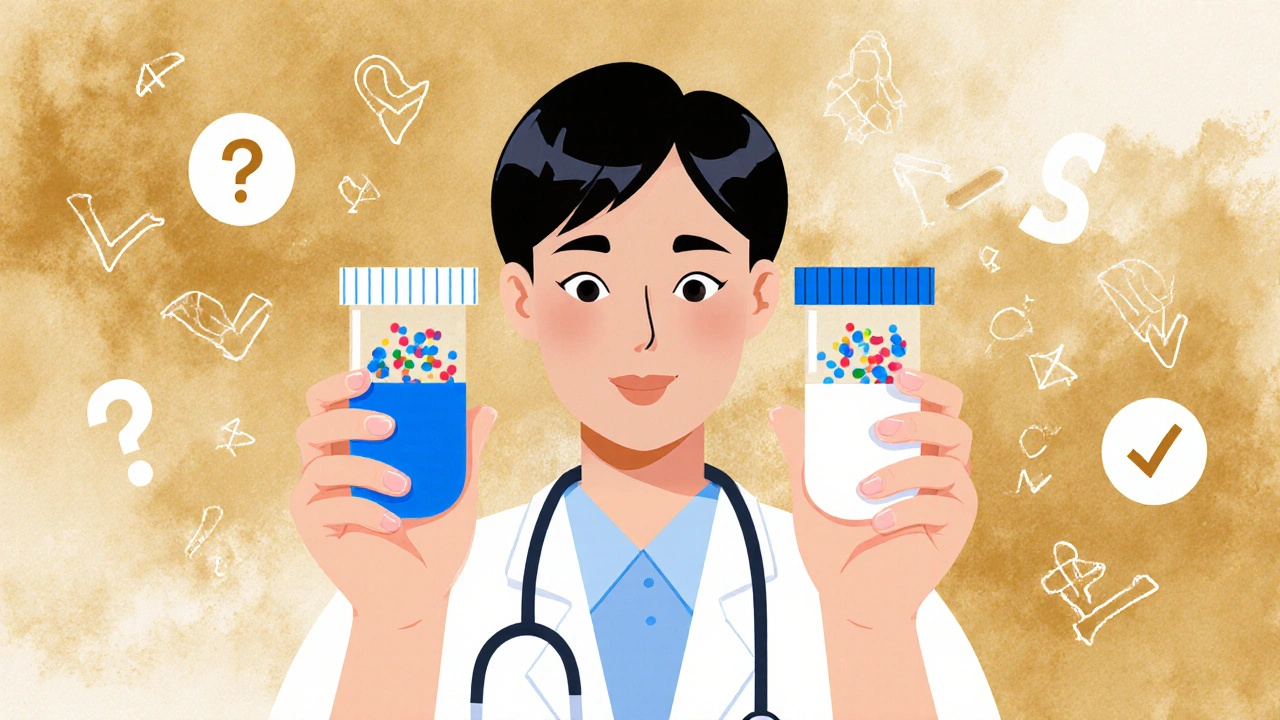Generic vs Brand Name Medications: What You Really Need to Know
When you pick up a prescription, you might see two options: a generic drug, a medication that contains the same active ingredient as a brand-name version but is sold under its chemical name. Also known as generic medication, it works the same way in your body and is approved by health regulators to be just as safe and effective. Or you might see the brand name drug, the original version developed by a pharmaceutical company, often sold under a trademarked name. Also known as name-brand medicine, it’s usually more expensive because of the research, marketing, and patent costs behind it. The big question isn’t whether one is better—it’s whether you’re paying extra for something that doesn’t give you more benefit.
Here’s the truth: both types have the same active ingredient, same strength, same way of being taken, and same side effects. The FDA and similar agencies around the world require generics to meet the same strict standards as brand names. The only differences are in the fillers, colors, and shape—things that don’t affect how the drug works. You might notice a generic pill looks different, or tastes slightly different if it’s a chewable, but that’s it. What changes most is the price. A generic version of a popular drug can cost 80% less. For someone taking medication every day, that adds up to hundreds—or even thousands—of dollars a year.
Some people worry generics aren’t as reliable, but that’s usually because of old myths or confusing experiences. Maybe your generic pill felt different because your body adjusted to the brand version over time. Or maybe the fillers caused a minor reaction—like a different dye or preservative—but that’s rare. If you switch and feel something unusual, talk to your doctor or pharmacist. Most of the time, the switch works perfectly. In fact, over 90% of prescriptions filled in the U.S. are for generics. Hospitals use them. Insurance companies push for them. And patients save billions because of them.
Not every drug has a generic version yet—especially newer ones still under patent. But when one is available, there’s almost no reason to pay more unless your doctor specifically says so. And even then, ask why. Sometimes it’s because of a rare formulation issue, but often it’s just habit. You don’t need to guess whether you’re getting the same result. You’re almost always getting the same result.
What you’ll find in the posts below are real, practical stories and facts about how these two types of drugs compare in everyday use. From how to safely switch from brand to generic, to why some people swear by one over the other, to how to spot a legitimate online pharmacy selling cheap generics—this collection cuts through the noise. You’ll see how generic Motrin and Effexor work just like their brand names, how people manage cost without sacrificing safety, and what to watch for when buying online. No marketing fluff. No confusing jargon. Just what matters: your health, your wallet, and the truth behind the pills you take every day.

